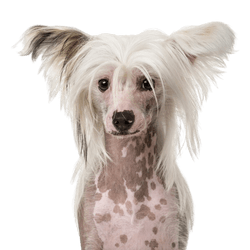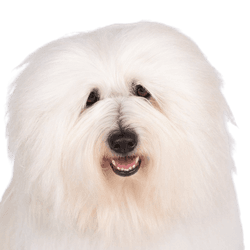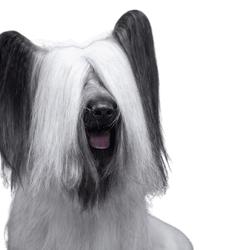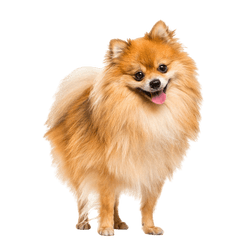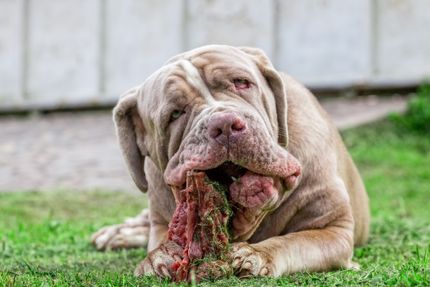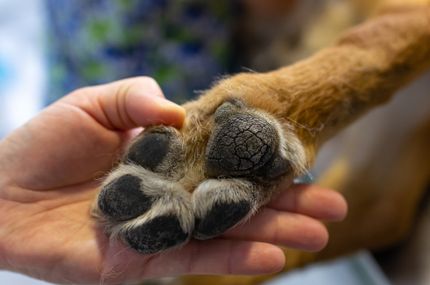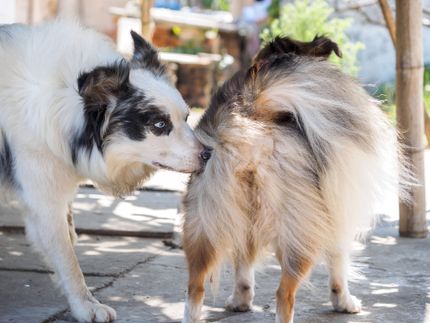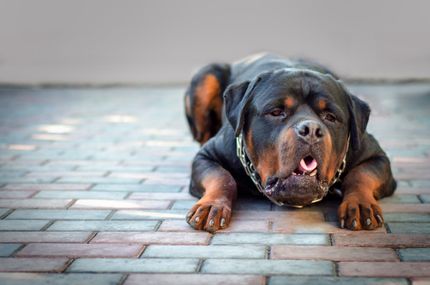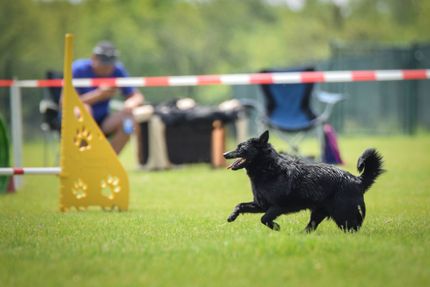
Chihuahua Breed description: Character & Co
Chihuahua
Facts & Origin
Where does the Chihuahua originate
Experts argue about the ancestry of the Chihuahua. The most common theory is that Chihuahuas are descendants of holy Aztec dogs. They were called Techichi and were sacrificed in ancient Mexico by the Aztecs during ritual ceremonies. An alleged proof for this theory is a province with the same name in Mexico where until today very similar looking, wild living small dogs exist. Allegedly the last ruler of the Aztecs, the Aztec king Montezuma, brought the Techichi to Chihuahua. If this theory of descent is correct, the breed would be over 2,000 years old. Another theory calls the Chihuahua a companion dog of the Toltecs. Today the Chihuahua is a FCI recognised Mexican breed and is listed in FCI Group 9 (companion and social dogs), Section 6 (Chihuahueño), Standard No. 218, no work-testing listed.
Keeping and training of the Chihuahua
This lively dog breed needs sufficient exercise and stimulation. Recommended activities for example are agility training, dummy training, obedience training or dog dance. The breed is particularly suitable for single people or couples due to their characteristic features. In families with children it is an advantage if the children are already a little older. Chihuahuas can react sensitively to loud and frequent crying of children. Training them well is the best basis for a relaxed life together with this dog breed. Chihuahuas can be very stubborn and assertive. In order to avoid problems, consequent, under certain circumstances strict training is therefore absolutely recommended. A good dog school can help with the upbringing and turn your puppy into an obedient dog capable of learning. Chihuahas usually get along with other dogs. However, early socialisation with other dogs is beneficial. Chihuahua puppies are often moody and argumentative. In order to prevent problems with other dogs later on, you should bring the puppies together with others at an early age. Since the high society (prime example Paris Hilton) has discovered the Chihuahuas for themselves, this dog breed has become more and more popular.

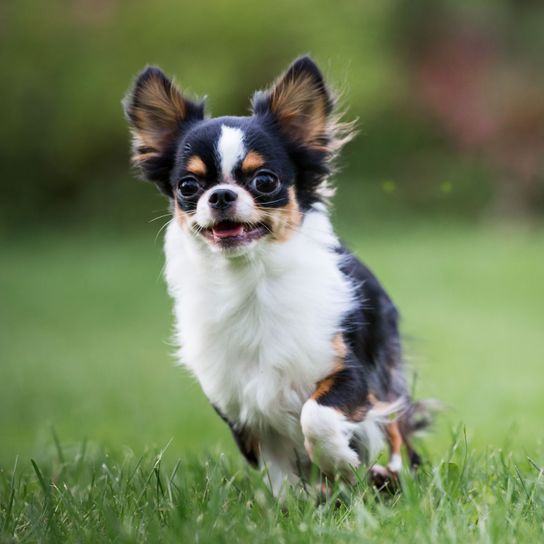
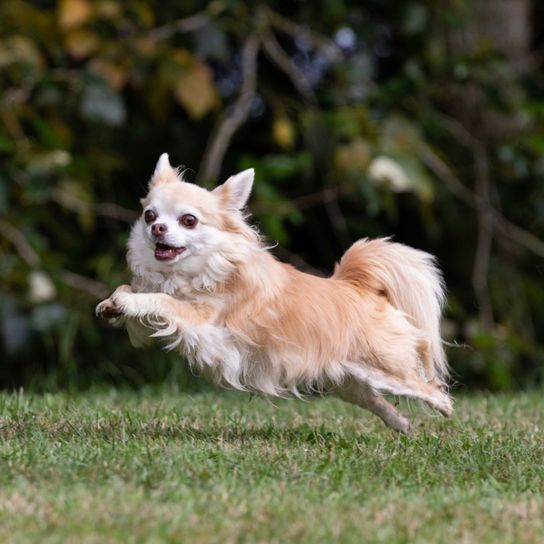
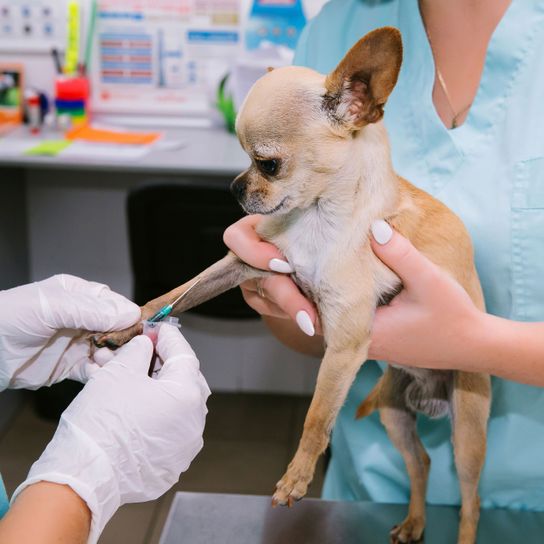
| Alternate Name | Tschiwawa |
| Origin | Mexico |
| Life expectancy | 12 - 20 years |
| Care requirements | low-maintenance |
| Activity level | low |
| FCI group | Chihuahueno |
| AKC group | Toy Group |
| KC group | Toy Group |
Chihuahua mixes
Attitude, character and temperament of the breed
Breed characteristics and temperament of the Chi - dog
The Chihuahua is described in the breed standard as a lively and alert dog, but nonetheless restless and, despite being so small, courageous. They are not afraid of larger dogs. Their vigilance especially is highly developed. Whenever a stranger stands in front of them in their territory, e.g. at the door of their flat, they are set off. However, loud barking or exaggerated growling should be prevented from the beginning. Even if they mostly focus on one single person, Chihuahuas are also suitable as family dogs. They integrate well into the family, are child-friendly and, if trained correctly, also behave friendly and lovable towards other people. The focus must be on their training - unfortunately this is often neglected because the dogs look so small and cute. But every dog can and wants to be trained and they want to know their place in the pack. Please don't turn the Chihuahua dogs into handbag dogs like Paris Hilton did.
Character
Usage

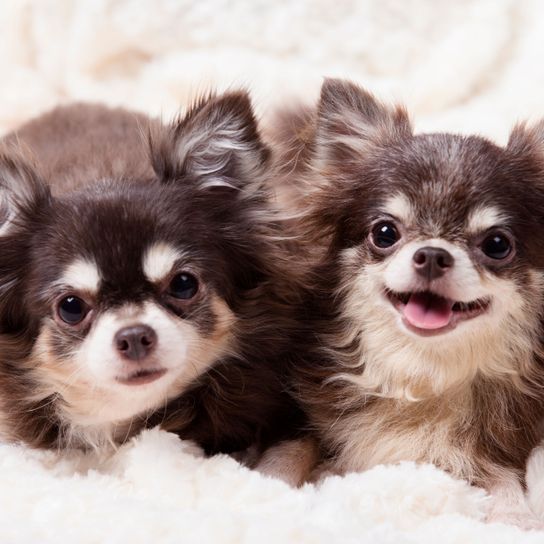



Health and breeding information
Care and health
The coat care of the Tschiwawa dog, as it is often misspelled, is simple. Comb the coat once a week and that's it. The life expectancy of a healthy dog lies between 12 and 15 years. Chihuahuas are however prone to developing the following diseases:
- Malpositioned teeth: The most common tooth misalignment is a Canininus crowding (canines in the lower jaw are too close together). An early orthodontic treatment can help here.
- Baby teeth persistence: Some baby teeth have not yet fallen out, although the permanent teeth are already growing back. Tartar formation, gum inflammation and tooth loss are imminent. The best prevention against tartar and other dental diseases is brushing their teeth daily with a special dog toothpaste.
- Urinary stones: Chihuahuas tend to form urinary stones. The reason is a genetic defect of the dogs. This can be counteracted by a specific low-purine diet, preferably dry food. Dog food rich in purine such as offal, meat and sausage should be avoided.
- Diabetes mellitus: This disorder of insulin production leads to severe physical damage if left untreated (e.g. no regular insulin injections). Dietary measures can also help. In your diet, you should preferably rely on dog food free from sugar and wheat.
If you too have developed a liking for these little dogs, there are the following options:
- Buying a Chihuahua: This option is probably the most common. However when buying a Chihuahua, you should definitely visit a reputable breeder. You can find a list of serious breeders here: Breeders in Germany. But you can also try your luck on here: Chihuahuas.
- Chihuahua: safe alternative of finding a Chihuahua is going to an animal shelter. The reasons that Chihuahuas end up in shelters are many different ones. A common reason for example is that the owner moves to a different home or country and cannot take their dog with them. Another reason can be that the owner develops a dog allergy. Other reasons can be incompatibility with children, divorce, feeling overwhelmed with the dog or the death of the dog's owner. The affected dogs then end up in shelters without it being their own fault. In this case you can prove yourself as a rescue angel and put an end to the distress of one of these animals. Don't worry, Chihuahuas are very adaptable and quickly get used to their new owners.
- Chihuahua breeding: You should leave this option to professional breeders


Appearance and coat colours of the Chihuahua
This smallest dog breed in the world reaches a height of 15 - 23 cm with a body weight of 1.5 - 3 kg. Their head shape is either round (apple-shaped) or narrow (deer-shaped). Typical for this breed are large eyes and their bat-like ears. Their hair is soft and dense. The coat colours vary from unicoloured (unicoloured & tan colours), spotted, tri-coloured, sable-coloured, masks and blue-fawn:
- blonde
- black
- red
- black & tan
- lilac & tan
- chocolate (plain)
- chocolate & tan
- isabelle
- isabelle-sable
- dove grey
- silver grey
- blue-cream
- blue-cream-sable
- blue tricolor
- blue-white
- blue & tan
| Fur length | medium |
| Fur | flat coated |
| Ear shape | Standing Ears |
| Tail | lang |
| Anatomy | slim |
| Size ♀ | 15 - 23 cm |
| Weight ♀ | 2 - 3 kg |
| Size ♂ | 15 - 23 cm |
| Weight ♂ | 2 - 3 kg |
| Suitable For | Children, Seniors |
Colors




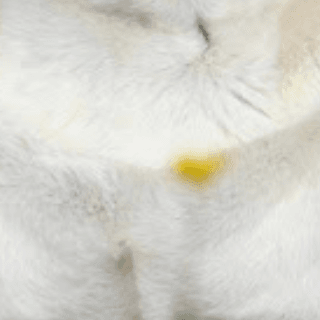

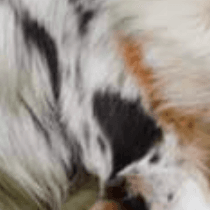


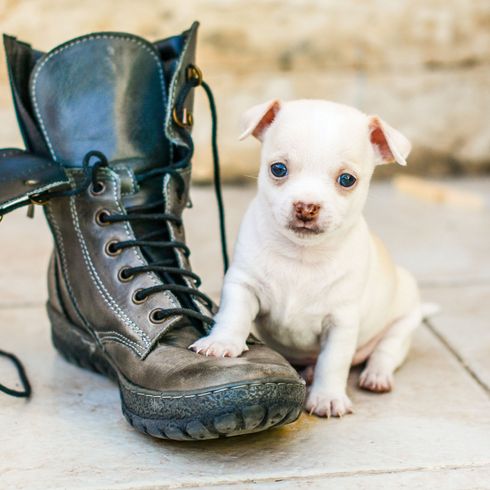
Known Diseases
Eye infections
Chronic eye infections can be very painful in dogs and can be treated with medication. In rare cases, the cornea must be treated.
Eye diseases
Often occur with allergies and intolerances.
Hypoglycemia
If an insulin dose was overdosed or accidentally administered twice, the dog may experience hypoglycemia.
Tartar
If dogs don't get a good food or sugary food, tartar can quickly appear.
FAQ
-
Yes, the Chihuahua can stay alone for a few hours with a lot of training. Just like any other dog breed.
-
Yes, the Chihuahua is suitable as a family dog and companion dog.
-
A Chihuahua needs medium - average exercise. Since the dog takes many more steps in the same distance as a human, a walk of 20-30 minutes can be enough for him. If you go out with the dog 3 times a day and do mental training with him at home, the dog will feel comfortable.
-
A Chihuahua can quickly become hypoglycemic, freezing. This is due to its size, the lack of fat and fur, and the breed per se.
-
No. A Chihuahua is just as "hard" to train as many other mini dog breeds. With a lot of love, consistency and positive reinforcement, even such a small dog breed can become a model dog.
-
The Chihuahua is prone to eye disease, hypoglycemia and tartar. He can also quickly suffer from underweight or overweight. Be sure to choose the correct and quality food for the mini dog.
-
Partly the Chihuahua can become a barker. But this is mainly due to a lack of or wrong education and not because of the breed per se.
-
On average, it takes a dog a few weeks to become housebroken. It can take up to half a year. It depends on the education and training. It is best to go outside every 2 hours at the beginning and reward the dog when he pees or makes big outside.
-
A lot of consistency despite the small body size and a puppy school are also recommended for mini dog breeds like the Chihuahua.
-
The perfect amount of food for Chihuahua is between 2-4% of its own body weight. This is what the dog should eat per day: So assuming your Chihuahua weighs 4kg, it should eat approx.160g. Preferably 80g in the morning and 80g in the evening.
-
It is best to feed a dog twice a day. In the morning and in the evening.
-
A basic puppy kit should be available anyway.
The puppy equipment- a food and a water bowl.
- a basket or a blanket, so that the dog has its protected place in the house.
- a transport box for the car.
- treats and possibly a treat tin for on the way.
- Puppy food and chews.
- Leash, collar and/or harness.
You can find more information in our magazine, where we give tips for buying a puppy.
Sources and relevant links
Horst Hegewald-Kawich (2015). Hunderassen von A bis Z: Über 200 beliebte Rassen aus aller Welt. Gräfe und Unzer Verlag.
Gabriele Lehari (2004). Ulmers Großes Lexikon der Hunderassen. Ulmer.
Offizielle Seite des FCI
Accessed on 16.01.2023
eDogs Magazin
Accessed on 16.01.2023
Horst Hegewald-Kawich (2015). Hunderassen von A bis Z: Über 200 beliebte Rassen aus aller Welt. Gräfe und Unzer Verlag.
Roland Berger (2022). Chihuahua. BoD - Books on Demand.
Other small dogs
Useful Articles
You can find articles that might interest you in the dogbible blog to match your favorite breed.
Visit our magazineto stay up to date on dog trends.
To find out more, view our Privacy Policy
Find here the breed that suits you and find out what character traits it has. Here you can also learn more about the origin, size and weight of your favorite breeds.
Matching your favorite breed, you'll find articles that might interest you on the dogbible dog blog.
5 reasons why it can be that your dog trembles
Bathing in Carinthia with dog - these are the most beautiful tips and places
Hiking with dog in Vienna - the most beautiful routes
Gestation dog - everything about pregnancy in dogs
Jogging with a dog - these are the tips you should follow to make it work







